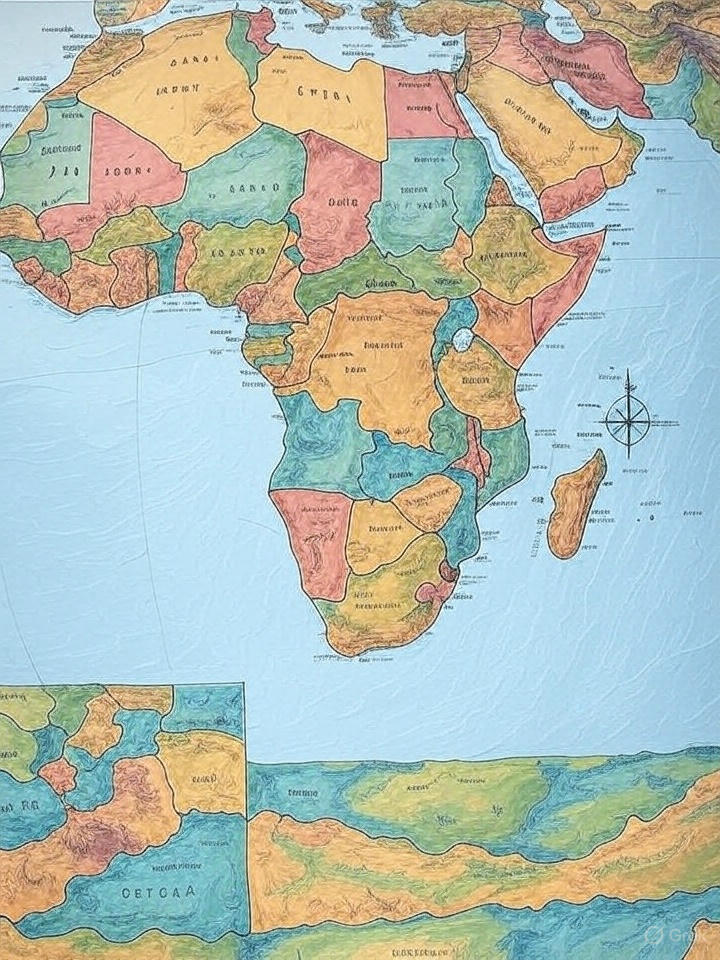
The Great Demographic Divergence: A World of Surging Youth and Silent Decline
By Anthony John
A global map of fertility rates, recently amplified by tech entrepreneur Elon Musk, has cast a stark light on the world’s diverging demographic destinies. The Statista visualization, based on World Bank data, illustrates a planet splitting into two distinct futures: one of explosive population growth, centered in Africa, and another of steady, systemic decline across the developed world and East Asia. This is not a distant forecast; it is a reality shaping our present and defining the 21st century.
The Epicenter of Growth: The African Youthquake
The data reveals a clear epicenter of demographic vitality. Sub-Saharan Africa is a sea of dark blue, with nations like Niger maintaining the world’s highest fertility rate at over 6.7 births per woman. Countries such as the Democratic Republic of Congo, Chad, and Somalia all average more than five. This explosive growth is why, according to the UN’s World Population Prospects 2022, the population of sub-Saharan Africa is projected to nearly double to over 2 billion people by 2050.
This “youthquake” presents both a monumental opportunity and a profound challenge. The potential for a “demographic dividend”—accelerated economic growth driven by a large working-age population—is immense. However, as institutions like the World Bank stress, this dividend is not automatic. It requires massive, urgent investment in human capital: education, healthcare, and job creation.
National strategies, such as Tanzania’s Vision 2050, are no longer just development plans; they are critical tools for managing a demographic boom. The challenge is staggering: Nigeria, for example, is forecast to have a population of nearly 400 million by 2050, surpassing the United States. Failure to provide opportunity for this wave of young people could fuel instability, resource strain, and mass migration.
The Silent Decline: The Demographic Winter
In stark contrast, vast swathes of the globe are experiencing a “demographic winter.” The causes are complex, rooted in economic pressures, high costs of living, intense work cultures, and the empowerment of women who are delaying childbirth or forgoing it altogether.
The crisis is most acute in East Asia. In 2023, South Korea broke its own record for the world’s lowest fertility rate, which fell to a staggering 0.72—less than a third of the 2.1 needed to maintain a stable population. Japan’s rate hovers around 1.2, and its government has warned that the nation is “on the brink of not being able to maintain social functions.”
Across Europe, the story is similar. Italy (1.24), Spain (1.19), and Germany are confronting “super-aging” societies, placing existential strain on their pay-as-you-go pension and healthcare systems. Decades of pro-natalist policies have yielded limited results. Even Hungary’s aggressive, family-centric policies—including lifetime income tax exemptions for mothers with four children—have only managed to nudge the fertility rate to around 1.6, still far below replacement level. Migration remains the most viable tool to offset population loss, but it is a politically volatile solution in many nations.
A New Global Balance
This demographic divergence is set to fundamentally reshape the global order. The UN projects that over half of all global population growth between now and 2050 will be concentrated in just eight countries: the Democratic Republic of the Congo, Egypt, Ethiopia, India, Nigeria, Pakistan, the Philippines, and Tanzania.
The geopolitical implications are staggering. As the West and East Asia shrink and age, global economic and political power will inevitably shift. This is the reality behind warnings from figures like Elon Musk about “population collapse,” a view shared by some economists who argue that demographic vitality is a direct precursor to innovation, military strength, and economic dynamism. Analysts at institutions like the U.S. National Intelligence Council have long flagged these demographic shifts as key drivers of future global competition and instability.
Two Questions for a Shared Future
The fertility divide is the central story of our collective future, forcing two fundamental questions upon the world:
Can the high-growth nations, particularly in Africa, harness their youth dividend by building resilient economies and stable societies, all while navigating challenges like climate change and rapid urbanization?
And can the low-growth nations of the developed world reinvent their social contracts—rethinking work, pensions, and national identity—to manage a future of graceful decline without sacrificing prosperity?
How each half of the world answers these questions will not only determine their own fate but will redefine the global landscape for generations to come.
